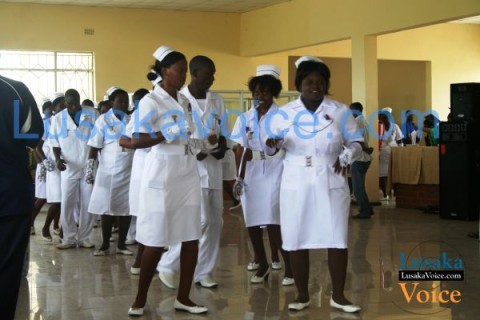Global attention to the Ebola crisis in West Africa has exposed a critical problem that exists throughout that continent: the overwhelming need for more trained health care professionals. A shortage of nurses and midwives, in particular, has meant gaps in health care services and, in some areas, no health care at all.
What we in the United States think of as the front lines of medical care — the family doctor — simply doesn’t exist for countless Africans. Regular preventive visits are a rarity. Residents of rural villages who are ailing, hurt or even pregnant typically have to travel miles, often on foot, to see someone with even a modicum of medical training. The consequences are, of course, predictable. Many African countries have the worst statistics in the world when it comes to maternal health, child mortality, life expectancy and other health measures.
In Zambia, a nation of more than 14 million people, there is only one nurse for every 1,500 citizens. That’s half as many as the one in 700 recommended by the World Health Organization. To put it in perspective, California is currently the only state in the U.S. that mandates nurse-to-patient ratios, and depending on the medical circumstances, the current ratios in the state range one nurse for every two to six patients. The contrast with Zambia is stark, to say the least.
There are nurse training programs in Zambia, but they are constrained by their capacity. With limits on space, teachers and equipment, Zambia’s traditional nurse training programs can produce at most about 600 nurses a year. But, thanks to an innovative partnership with The MasterCard Foundation and the African Medical and Research Foundation — along with important on-the-ground support from the government’s ministry of health — there is room for optimism.
About a year ago, ChildFund International launched an e-learning program focused exclusively on nurse training. This distance-learning model takes advantage of existing computer resources that are available in remote areas, which means, of course, that nurses and midwives can be trained outside the classroom.
As a result, twice as many nurses will be trained over the five-year duration of the program. Instead of 3,000 nurses and midwives who would normally be trained, some 6,000 will graduate from the program and be ready to serve Zambians in all parts of the country.
Just one year into the program, the early returns are encouraging. First, the accredited nursing and midwife training curricula have been adapted into e-learning modules, and training centers have been equipped with computers and other learning tools. The first of more than 1,600 scholarships to support participation in the program have been awarded, and more than 130 student nurses have begun moving through the program.
The program is particularly important for girls whose futures, as in so many developing countries, are severely restricted because of duties related to caring for the home or tending to the family plot. Right now, 72 percent of the participants in this program are female. Given the career and life-skills training that they are receiving, the program is nothing short of a life-altering opportunity for all of them.
What’s especially exciting about the nurse e-learning program is the impact it will have on health care in Zambia and the economic opportunities and jobs it will provide to young people. The program taps technology and innovation to help address systemic problems. And when these kinds of solutions work, they can be replicated again and again in other areas of need.
Our friends at MasterCard used to say in their ads, “There are some things that money can’t buy.” But in this case, money can buy a great deal — vital job training that will help thousands of young people find and hold good-paying jobs, the end of generational poverty for thousands of families, and improved health care in a country where maternal, infant and neonatal deaths are among the highest in the world. And, perhaps most of all, it’s buying a partnership that truly is a model for global impact.
http://www.huffingtonpost.com/anne-goddard/virtual-learning-may-be-s_b_6705760.html

 JOIN DRIVERN TAXI AS PARTNER DRIVER TODAY!
JOIN DRIVERN TAXI AS PARTNER DRIVER TODAY!











